So what would the resulting unit price be then?
You are using an out of date browser. It may not display this or other websites correctly.
You should upgrade or use an alternative browser.
You should upgrade or use an alternative browser.
M270 MLRS and M142 HIMARS Developments
- Thread starter Lc89
- Start date
Forest Green
ACCESS: Above Top Secret
- Joined
- 11 June 2019
- Messages
- 9,421
- Reaction score
- 17,159
Well $67.6m is stated to be 2.5% in the article, so the new total cost of 18,000 missiles is 39x67.6m = 2636.4m. 1 missile is 2636.4/18000 = 0.146m = $146k.So what would the resulting unit price be then?
Unclear whether this is for GMLRS-ER though. That would be my guess though.
- Joined
- 21 January 2015
- Messages
- 12,096
- Reaction score
- 16,232
Biden approved delivery of the long-range Army Tactical Missile System, known as ATACMS, in early March, and the U.S. included a “significant” number of them in a $300 million aid package announced at the time, one official said.
The two U.S. officials, who spoke on condition of anonymity to discuss the delivery before it became public, would not provide the exact number of missiles given last month or in the latest aid package, which totals about $1 billion.

Ukraine uses long-range missiles secretly provided by US to hit Russian-held areas, officials say
U.S. officials say Ukraine for the first time has begun using long-range ballistic missiles, striking a Russian military airfield in Crimea and Russian troops in another occupied area overnight

Our First Look At The Army's Unmanned HIMARS Launcher Truck Firing
The Army sees the the Autonomous Multi-domain Launcher (AML) as an important way to increase firepower, but not personnel demands.
Forest Green
ACCESS: Above Top Secret
- Joined
- 11 June 2019
- Messages
- 9,421
- Reaction score
- 17,159

US Army sends HIMARS rocket launcher island hopping in the Philippines
The US Army and its joint partners rapidly transported and operated HIMARS rocket launchers across the Philippines during Balikatan 2024.
- Joined
- 23 August 2011
- Messages
- 1,603
- Reaction score
- 4,740
Forest Green
ACCESS: Above Top Secret
- Joined
- 11 June 2019
- Messages
- 9,421
- Reaction score
- 17,159
Turns out HIMARS rockets have inertial as well as GPS, which helps counter EW and better inertial systems may be invaluable going forward.

 breakingdefense.com
breakingdefense.com

Taking aim: Army leaders ponder mix of precision munitions vs conventional - Breaking Defense
Three four-star US Army generals this week weighed in with their opinions about finding the right balance between conventional and high-tech munitions - but the answers aren't easy.
Forest Green
ACCESS: Above Top Secret
- Joined
- 11 June 2019
- Messages
- 9,421
- Reaction score
- 17,159
Forest Green
ACCESS: Above Top Secret
- Joined
- 11 June 2019
- Messages
- 9,421
- Reaction score
- 17,159
- Joined
- 9 October 2009
- Messages
- 21,928
- Reaction score
- 13,552

China is pushing. The Philippine forces are pushing back – with ship-killer missiles
Just a harmless training exercise
The C-Stars that arm the Jose Rizal-class frigates are just the first of a trio of new anti-ship systems on Manila’s shopping list. The Philippines is also buying Brahmos ground-launched anti-ship missiles from India as well as wheeled High-Mobility Artillery Rocket System (HIMARS) launchers from the United States. HIMARS launchers fire the Guided Multiple Launch Rocket System (GMLRS) artillery missile, primarily useful in land warfare.
But American arms-maker Lockheed Martin, which produces the HIMARS, is developing an anti-ship missile that would be compatible with the HIMARS’ rocket pod.
“Our new equipment will be coming soon,” Philippine army chief Gen. Romeo Brawner said last year.
With C-Star and Brahmos missiles and potentially HIMARS-launched anti-ship missiles, Philippine forces could threaten Chinese ships hundreds of miles from the Philippine coast. The disputed Second Thomas Shoal, the locus of a bitter and escalating territorial dispute between The Philippines and China, lies just 100 miles west of the Philippine island of Palawan.
Presumably they are refering to PrSM.
- Joined
- 3 June 2011
- Messages
- 18,303
- Reaction score
- 12,123
ATACMS most likely.
China is pushing. The Philippine forces are pushing back – with ship-killer missiles
Just a harmless training exercisewww.telegraph.co.uk
Presumably they are refering to PrSM.
- Joined
- 16 April 2008
- Messages
- 9,586
- Reaction score
- 14,414
ATACMS most likely.
ATACMS doesn't have an antiship seeker. The Cross-Domain ATACMS with a seeker was cancelled in FY21.
But PrSM increment 2 has an antiship seeker and seems to be moving along relatively quickly.
ATACMS most likely.
The ship-killer in question is almost certainly the Brahmos AShM, that missile in tests has not only sunk the target with just one missile in some cases it has blown the target in half before sinking.
The Cross-Domain ATACMS with a seeker was cancelled in FY21.
No doubt Congress is regretting that decision in light of what has been happening in Ukraine since 2022, Ukraine would no doubt have put the cross-domain ATACMS to good use sinking Russian warships.
- Joined
- 16 April 2008
- Messages
- 9,586
- Reaction score
- 14,414
The ship-killer in question is almost certainly the Brahmos AShM, that missile in tests has not only sunk the target with just one missile in some cases it has blown the target in half before sinking.
The article mentions three antiship weapons: CStar, Brahmos, and a HIMARS-launched weapon that pretty much has to be PrSM.
- Joined
- 21 January 2015
- Messages
- 12,096
- Reaction score
- 16,232
You were saying.The ship-killer in question is almost certainly the Brahmos AShM, that missile in tests has not only sunk the target with just one missile in some cases it has blown the target in half before sinking.
No doubt Congress is regretting that decision in light of what has been happening in Ukraine since 2022, Ukraine would no doubt have put the cross-domain ATACMS to good use sinking Russian warships.

Ukraine May Have Revealed It Has ATACMS Rockets With 470-lbs Warheads
The Ukrainian military sank another warship from the Russian Black Sea Fleet on Sunday, possibly hitting it with M48 or M57 ATACMS rockets with unitary warheads.
 www.forbes.com
www.forbes.com
Firefinder
ACCESS: Top Secret
- Joined
- 5 October 2019
- Messages
- 1,041
- Reaction score
- 1,888
It needs to be pointed out that the Attack happened in port by all accounts with the minesweeper tied up to dock.You were saying.

Ukraine May Have Revealed It Has ATACMS Rockets With 470-lbs Warheads
The Ukrainian military sank another warship from the Russian Black Sea Fleet on Sunday, possibly hitting it with M48 or M57 ATACMS rockets with unitary warheads.www.forbes.com
Basically a floating building.
Just need good targeting coordinates and bang, More or less tge same way arty works. Heck does even need a direct hit, close enough with the nearly 500 pound warhead going off underwater will do frightening damage to a ship. If it was unprepared, it be a keel breaker in effect.
Now if the Sweeper was moving on the other hand...
Now that be interesting.
Forest Green
ACCESS: Above Top Secret
- Joined
- 11 June 2019
- Messages
- 9,421
- Reaction score
- 17,159
Hitting a ship in the dock is a different matter, Storm Shadow has also done that, yet it isn't regarded as ASuW capable.You were saying.

Ukraine May Have Revealed It Has ATACMS Rockets With 470-lbs Warheads
The Ukrainian military sank another warship from the Russian Black Sea Fleet on Sunday, possibly hitting it with M48 or M57 ATACMS rockets with unitary warheads.www.forbes.com
- Joined
- 9 October 2009
- Messages
- 21,928
- Reaction score
- 13,552

US-supplied Himars ‘completely ineffective’ as Russia jams skies with new tech
Ukraine forced to stop using many arms supplied by the West because of Putin’s electronic warfare strategy
Colonial-Marine
UAVs are now friend, drones are the real enemy.
- Joined
- 5 October 2009
- Messages
- 1,468
- Reaction score
- 1,320
Is the GPS really providing that much course correction during the terminal phase of the projectile/missile coming down? Could that be done closer to the epoch and having INS do the rest? Less accurate for sure but still something. Have the Russians only been able to implement this level of jamming around rear-area targets? It seems cheap drones are still regularly able to wreak havoc on the front edge of the battlefield. I'd have to expect if they could have that support up front those drones would be similarly ineffective.
Less unitary warheads and more ones carrying cluster bomblets would probably help. Does something like Excaliber for DPICM exist?
Less unitary warheads and more ones carrying cluster bomblets would probably help. Does something like Excaliber for DPICM exist?
What the US needs to be doing is to start supplying Ukraine with anti-GPS HOJ terminal seekers to mount on their donated JDAM-ERs and GLSDBs, once that happens Russian anti-GPS jammers should quickly cease being a problem (A long with a lot of dead Russian soldiers operating these anti-GPS jammers).
Forest Green
ACCESS: Above Top Secret
- Joined
- 11 June 2019
- Messages
- 9,421
- Reaction score
- 17,159
'Completely ineffective' seems kind of exaggerated given that yesterday we saw an entire S-400 battery being squad-wiped by a HIMARS ATACMS strike, and earlier in the week we saw all those 'also completely ineffective GLSDBs' hitting a Russian occupied building.
US-supplied Himars ‘completely ineffective’ as Russia jams skies with new tech
Ukraine forced to stop using many arms supplied by the West because of Putin’s electronic warfare strategywww.telegraph.co.uk
Last edited:
Kat Tsun
eeeeeeeeeeeeeee
- Joined
- 16 June 2013
- Messages
- 1,366
- Reaction score
- 1,774
Is the GPS really providing that much course correction during the terminal phase of the projectile/missile coming down?
M31 series rockets have the equivalent of a Mk 81 warhead, at best, so yes.
Less unitary warheads and more ones carrying cluster bomblets would probably help.
The majority of HIMARS rounds sent are probably M30 series. Cluster munitions are marginal against anything with top cover though.
Does something like Excaliber for DPICM exist?
No, M483 series lacks the (super?) deep intrusion well necessary for M1156 fuses IIRC. It's only for M795 and M589 series.
Firefinder
ACCESS: Top Secret
- Joined
- 5 October 2019
- Messages
- 1,041
- Reaction score
- 1,888
That depends on the model.No, M483 series lacks the (super?) deep intrusion well necessary for M1156 fuses IIRC. It's only for M795 and M589 series
The OG M483 is for the older short fuses.
The A1 plus models are deep well fuses capable, actually uses the fuze bursting charge to kick out the munitions, and as such can, and have, use the PGK System to precisely drop its payload of either DCIPM OR Mines where ever.
Isn't advise too since the spread of those combine with a modern gun accuracy basically made it unneed. Plus doctrine wise call for multiple shots for a proper coverage of the submunitions. But you can do it if you want to.
There was a Cargo Shell Varient of the Excalibur planned for both DCIPM and/or Mine but that was canceled back in like 2014 irc with the whole dropping of the submunition deal.
There is no Super deep cavity only Shallow, which is being removed from service and Deep cavity which is the new standard. It was from how the old mechanical time fuzes were basically jusy a nub top bit with very little need for peneration into the shell, while the First few gens of proxy fuses had a long tail for the battery. Meaning you need a deep intrusion into the shell to fit them. Modern fuses use the tail for a larger burster charge to ignite the new insensitive explosives or to fire off any munitions carried.
Edit: old DCIPM shell did not have a deep fuse cavity since at the time it did not made sense to fit them with proxy fuses, but in tests during the late 80s they found that the proxy fuses gave a better more reliable dispersion patterns to submunitions. That was due to it be far easier to set the Proxy fuse to go off at the right attitude, and it reliably firing at said attitude, to get the perfect dispersion. Compare to the Time fuses which was heavily dependent on both Shell speed and impact area terrian. Far less variation makes for a far more reliably size pattern.
Last edited:
Kat Tsun
eeeeeeeeeeeeeee
- Joined
- 16 June 2013
- Messages
- 1,366
- Reaction score
- 1,774
That depends on the model.
The OG M483 is for the older short fuses.
The A1 plus models are deep well fuses capable, actually uses the fuze bursting charge to kick out the munitions, and as such can, and have, use the PGK System to precisely drop its payload of either DCIPM OR Mines where ever.
Isn't advise too since the spread of those combine with a modern gun accuracy basically made it unneed. Plus doctrine wise call for multiple shots for a proper coverage of the submunitions. But you can do it if you want to.
There was a Cargo Shell Varient of the Excalibur planned for both DCIPM and/or Mine but that was canceled back in like 2014 irc with the whole dropping of the submunition deal.
TBF PGK is like 80% of an Excalibur anyway, so as long as it fits...
But yeah rest in peace cassette Excalibur.
To be fair, the s400 video featured a cluster warhead atacms. Which means it was a non-gps guided missile, as to my knowledge all gps guided variants have unitary warheads. over a 160 km range of the cluster munition variant, even just INS guidance may be enough to steer the missile close enough for the cluster warhead to do its magic.'Completely ineffective' seems kind of exaggerated given that yesterday we saw an entire S-400 battery being squad-wiped by a HIMARS ATACMS strike, and earlier in the week we saw all those 'also completely ineffective GLSDBs' hitting a Russian occupied building.
jammers aren't gonna be everywhere, of course. Less important targets are not likely to have them around.
Forest Green
ACCESS: Above Top Secret
- Joined
- 11 June 2019
- Messages
- 9,421
- Reaction score
- 17,159
Cluster munition variants come in both ranges, there's just more munitions in the lower ranged one.To be fair, the s400 video featured a cluster warhead atacms. Which means it was a non-gps guided missile, as to my knowledge all gps guided variants have unitary warheads. over a 160 km range of the cluster munition variant, even just INS guidance may be enough to steer the missile close enough for the cluster warhead to do its magic.
I also see jammers getting hit by HIMARS, lots of evidence throughout this thread:jammers aren't gonna be everywhere, of course. Less important targets are not likely to have them around.
To the point where I think the whole 'ineffective' story might just be diversionary propaganda.
I also see jammers getting hit by HIMARS, lots of evidence throughout this thread:
https://www.secretprojects.co.uk/threads/electronic-warfare.32572/
To the point where I think the whole 'ineffective' story might just be diversionary propaganda.
There are already simple, available for mass-production anti-GPS jammer HOJ terminal seekers available for the likes of SDB, JDAM and MALD.
Forest Green
ACCESS: Above Top Secret
- Joined
- 11 June 2019
- Messages
- 9,421
- Reaction score
- 17,159
Were any supplied to Ukraine though?There are already simple, available for mass-production anti-GPS jammer HOJ terminal seekers available for the likes of SDB, JDAM and MALD.
There are already simple, available for mass-production anti-GPS jammer HOJ terminal seekers available for the likes of SDB, JDAM and MALD.
There are also anti jam GPS receivers like SABR-Y/M and HAMMER. But it is not clear if or how many of any of these have been provided to Ukraine. Likely few to none.
Scott Kenny
ACCESS: USAP
- Joined
- 15 May 2023
- Messages
- 11,418
- Reaction score
- 13,911
Do the Mk41 cells being used for Typhon fit into a HIMARS?The article mentions three antiship weapons: CStar, Brahmos, and a HIMARS-launched weapon that pretty much has to be PrSM.
- Joined
- 16 April 2008
- Messages
- 9,586
- Reaction score
- 14,414
Do the Mk41 cells being used for Typhon fit into a HIMARS?
No. Strike-length VLS canisters are 22 feet long; MLRS/HIMARS pods are 13 feet, 2 inches.
The Mk 70 Typhon launcher is basically the size of a 40-foot ISO container (can't find a source to confirm but I'd be shocked if it isn't exactly the same). That's why Typhon needs a much larger truck to tow it.
Last edited:
Do the Mk41 cells being used for Typhon fit into a HIMARS?
No, far longer and heavier.
Scott Kenny
ACCESS: USAP
- Joined
- 15 May 2023
- Messages
- 11,418
- Reaction score
- 13,911
So even NMESIS wouldn't fit... bugger.No. Strike-length VLS canisters are 22 feet long; MLRS/HIMARS pods are 13 feet, 2 inches.
kqcke for you
PUMA PUMA PUMA
- Joined
- 3 November 2022
- Messages
- 1,271
- Reaction score
- 1,673
NMESIS should be able as they can take 1 TomahawkSo even NMESIS wouldn't fit... bugger.
- Joined
- 11 February 2007
- Messages
- 2,537
- Reaction score
- 4,297
It's the Telegraph, I've never rated their defence reporting, which has strayed into complete fiction at times, and is inevitably politicised, and while the story is behind a paywall, just the byline says it's not even by their defence correspondent.'Completely ineffective' seems kind of exaggerated given that yesterday we saw an entire S-400 battery being squad-wiped by a HIMARS ATACMS strike, and earlier in the week we saw all those 'also completely ineffective GLSDBs' hitting a Russian occupied building.
Forest Green
ACCESS: Above Top Secret
- Joined
- 11 June 2019
- Messages
- 9,421
- Reaction score
- 17,159
Yes, but the Mk41 cells would not fit on an ATACMS, which I thing is the subject being discussed.NMESIS should be able as they can take 1 Tomahawk

Our First Look At Marines' Tomahawk Missile Launching Drone Truck Firing
Ground-based Tomahawk launchers are set to give the Marine Corps entirely new ways to hold targets on land and at sea at risk.
The NSM launching cells might/should though.

Here is our first look at the USMC's NMESIS: NSM being launched from an unmanned JLTV - Naval News
Raytheon and the U.S. Marine Corps successfully demonstrated the Navy Marine Expeditionary Ship Interdiction System, or NMESIS...
With the NMESIS Rogue fires JLTV you seem to be able to mix and match HIMARS with dual NSM and single Mk41 launchers anyway.

USMC Demonstrates Long-range Precision Fires Launchers - Naval News
Naval News inquired to the USMC Public Affairs office for more info on the types of launchers, such as ROGUE-FIRES, NMESIS, and the LRF.
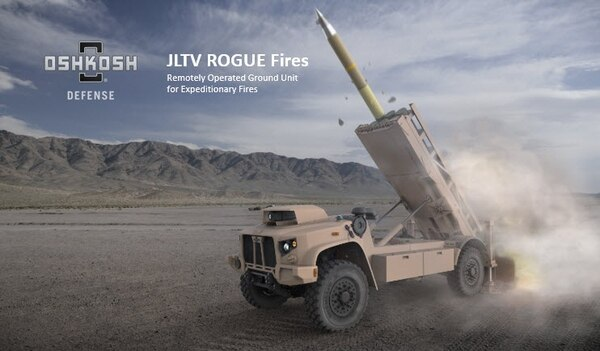
The ROGUE-FIRES unmanned JLTV with a “six-pack” pod of HIMARS rockets. Combined with NMESIS and Naval Strike Missiles, ROGUE-FIRES provides the U.S. Marines with long-range precision fires, but currently HIMARS rockets cannot target moving ships. Image: OshKosh Defense
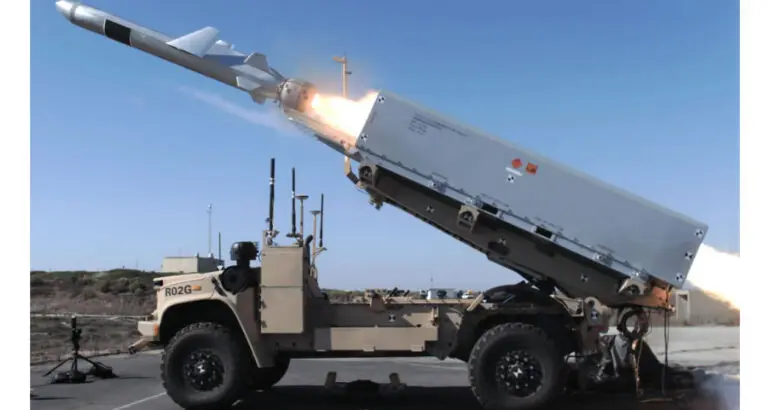
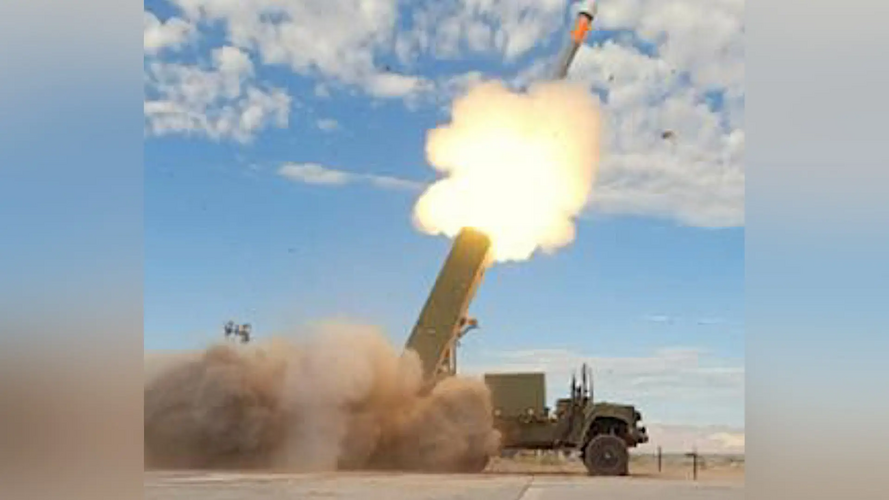
There's also the army's Typhon and marine's Mark 31 MTVR cabs for quad Mk41/Mk70 stuff.
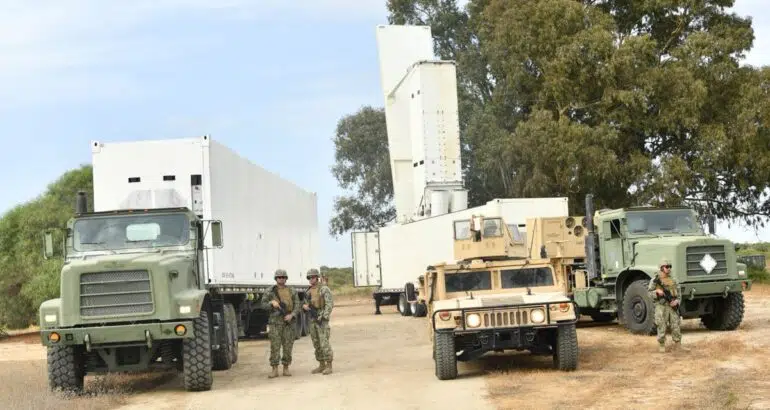
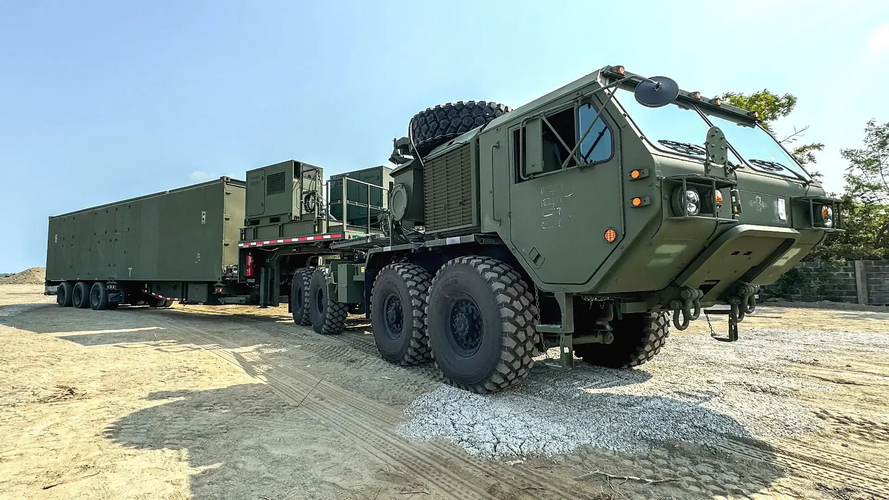
Last edited:
- Joined
- 9 October 2009
- Messages
- 21,928
- Reaction score
- 13,552

Ukraine-Russia war live: Ukraine fires Himars into Russia for first time
Ukraine has fired US-made weapons at targets inside Russia for the first time, according to Russian sources.
Kat Tsun
eeeeeeeeeeeeeee
- Joined
- 16 June 2013
- Messages
- 1,366
- Reaction score
- 1,774
It's the Telegraph, I've never rated their defence reporting, which has strayed into complete fiction at times, and is inevitably politicised, and while the story is behind a paywall, just the byline says it's not even by their defence correspondent.
Their source is the same as everyone else reporting on the issue: the Ukrainian MOD and a Washington Post expose on the matter.
Forest Green
ACCESS: Above Top Secret
- Joined
- 11 June 2019
- Messages
- 9,421
- Reaction score
- 17,159
View: https://x.com/UKikaski/status/1797251481818800155
Ukraine-Russia war live: Ukraine fires Himars into Russia for first time
Ukraine has fired US-made weapons at targets inside Russia for the first time, according to Russian sources.www.telegraph.co.uk
Similar threads
-
-
Ground Launched Small Diameter Bomb (GLSDB)
- Started by Triton
- Replies: 228
-
-
British Ships Taken Up from Trade (STUFT) other than Falklands
- Started by uk 75
- Replies: 2
-
US Air Force orders the Convair Model 6 ultra-heavy airlifter
- Started by Vahe Demirjian
- Replies: 8
